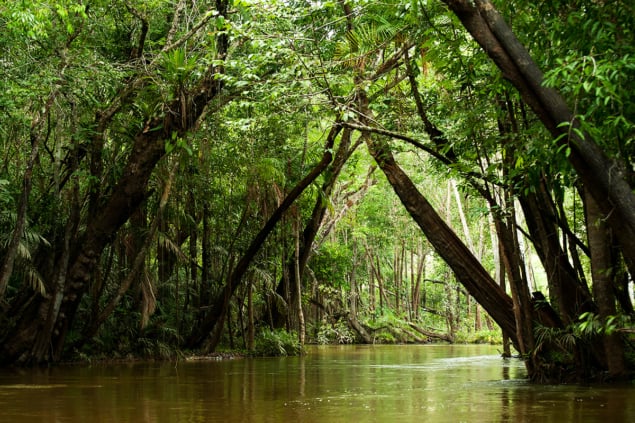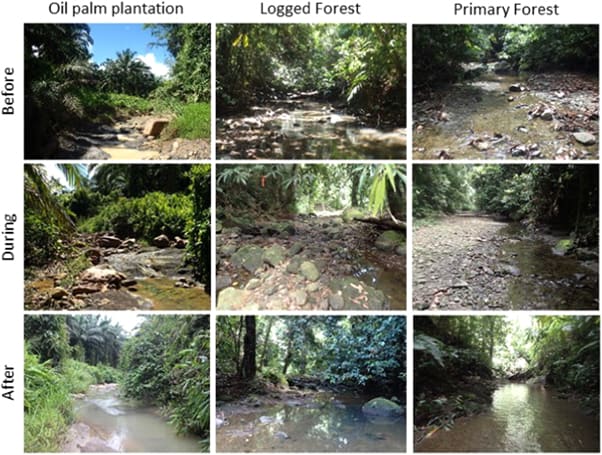
Destruction of pristine rainforest affects not just the vegetation and land animals but fish in forest rivers too. There are fewer Nematabramis everetti, a common species in the carp family, in streams that run through logged areas of Borneo, according to researchers.
In 2013 Clare Wilkinson from Imperial College London, UK, and colleagues started investigating the impact of land use change on biodiversity in Malaysia. They selected 16 streams in Southeastern Sabah and monitored N. everetti along a 200 m transect of each watercourse over the following four years. Four of the streams ran through primary forest, seven ran through logged forest and five passed through palm oil plantations.
In 2016 a severe El Niño brought drought to the region, drying the streams in the study region into a series of disconnected pools.

Clare L Wilkinson et al 2019 Environ. Res. Lett. 14 045008 doi:10.1088/1748-9326/ab0128
“The drought had a major impact on streams,” says Wilkinson. “Water temperatures rose, oxygen levels dropped and freshwater biodiversity was restricted to smaller areas. This disturbance exceeded any worst-case scenario for climate change-induced warming but served as a useful indicator for how ecosystems might respond to a warming world.”
Using cast nets to capture the fish, Wilkinson and colleagues measured, weighed and tagged the animals before returning them to the stream. The researchers also measured the temperature, dissolved oxygen, pH, water speed and size of the stream each year.
Water temperatures were significantly higher in logged forest and oil palm streams – by 2.5 °C and 5.5 °C, respectively — compared to primary forest streams, the team found. These differences became even more pronounced during the drought. Dissolved oxygen was also lower in logged forest and palm oil streams, and this too was exacerbated by the drought.
For N. everetti logged areas are the least desirable, the results show. Wilkinson and colleagues recorded between 2 and 3000 N. everetti per kilometre of stream in primary forest and oil palm areas, but only 500 or so in logged regions.
“The species feeds on insects falling into the streams, and this is lowest in logged forests,” explains Wilkinson, who published the findings in Environmental Research Letters (ERL).
Meanwhile, oil palm plantations had less of an impact on N. everetti, but in a parallel study, Wilkinson and her colleagues show that aquatic species richness was reduced in oil palm areas.
During the El Niño-induced drought, N. everetti remained a healthy size but tended to travel further the researchers found. In particular, they recorded falling numbers of fish in oil palm regions. However, Wilkinson and colleagues suspect this decline may be an artefact of the cast net catching method, with nets more frequently entangled in vegetation or caught on exposed rocks around the smaller pools during the drought.
Overall the findings suggest that N. everetti is surprisingly resilient to drought, and more affected by land-use change, with logging reducing their numbers most. The researchers anticipate that rarer species are likely to suffer greater impacts from both land-use change and climate change.
People rely heavily on freshwater ecosystems in the region as a source of food and clean water; Wilkinson and colleagues believe that results like these are needed to develop mitigation strategies for dealing with future changes.



